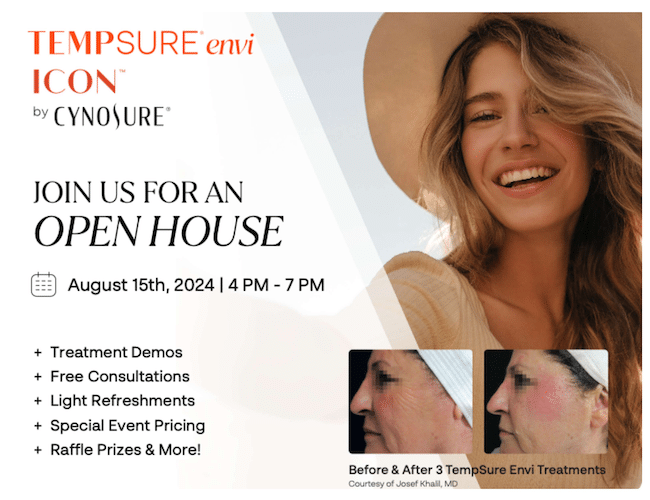Glaucoma
Glaucoma is a group of eye disorders that injure or impair the optic nerve, the health of which is necessary for good vision. This damage is often caused by abnormally high pressure in your eye. Glaucoma is one of the primary causes of blindness for people over the age of 60. It can occur at any age but is more common in older adults.
Most forms of glaucoma have no warning signs. The effect on your eyes is so gradual that you may not perceive the reduced quality in your vision until it is at an advanced stage.
Because vision loss due to glaucoma can’t be recovered, it’s important to have regular eye exams that include measurements of your eye pressure so a diagnosis can be made in its early stages and treated appropriately. For an eye exam call Music City Optical or schedule your appointment online. If glaucoma is recognized early, vision loss can be slowed or prevented. If you have the condition, you’ll generally need treatment for the rest of your life.
What are the Causes and Risk Factors for Glaucoma?
Primary open-angle glaucoma
This is the most common form of glaucoma. Injury to the optic nerve is slow and painless. Those affected can lose a substantial portion of vision before perceiving any vision problems. One theory about its occurrence is that the eye’s drainage system gradually becomes inefficient. This leads to an increased amount of fluid and a gradual buildup of pressure inside the eye. Another theory about the origin of open-angle glaucoma is that there is inadequate blood flow (perfusion) to the optic nerve. Other theories also exist.
Angle-closure glaucoma
This type of glaucoma, also called closed-angle glaucoma or narrow-angle glaucoma, is a less common form of the disease. It is a medical emergency that can cause vision loss within a day of its onset. It occurs when the drainage angle in the eye (formed by the cornea and the iris) closes or becomes obstructed. Many people who acquire this type of glaucoma have a very constricted drainage angle. With age, the lens in the eye becomes larger, pushing the iris forward and narrowing the space between the iris and the cornea. As this angle gets thinner, the fluid in the eye is blocked from the drainage system. Therefore the fluid builds up and eye pressure increases. Angle-closure glaucoma can be chronic (progressing gradually) or acute (appearing suddenly). The acute form takes place when the iris totally blocks fluid drainage.
Secondary glaucoma
Secondary glaucoma results from an injury or another eye disease. It may be caused by a variety of medical disorders, medications, physical injuries, and eye abnormalities. Infrequently, eye surgery can lead to secondary glaucoma.
Normal-tension or low tension glaucoma
In this form of glaucoma, eye pressure remains within the “normal” range, but the optic nerve is damaged nevertheless. It is not known why this occurs. Possibly, people with low-tension glaucoma have an abnormally sensitive optic nerve. Or they may have a diminished blood supply to the optic nerve caused by a condition such as atherosclerosis, a hardening of the arteries. In this situation, even normal pressure on the optic nerve can cause damage.
The following factors can increase the risk of developing glaucoma:
- Age. People over age 60 are at greater risk for the disease. African Americans, however, are at increased risk after age 40. The risk of developing glaucoma rises slightly with each year of age.
- Race. African Americans are at greater risk and they are more likely to suffer permanent vision loss. People of Asian descent and Native Alaskans are at higher risk of angle-closure glaucoma. People of Japanese descent are more likely to develop low-tension glaucoma.
- Family history of glaucoma. Having a family history of glaucoma increases the chances of developing glaucoma significantly.
- Medical conditions. Studies indicate that diabetes, high blood pressure, sleep apnea, and heart disease may increase the risk of developing glaucoma.
- Physical distress to the eye. Severe trauma, such as being hit in the eye, can result in immediate increased eye pressure. Internal damage from such a trauma can also cause future increases in pressure. Injury can also dislocate the lens, closing the drainage angle and increasing pressure.
- Other eye-related risk factors. Certain features of eye anatomy, namely narrower corneas and optic nerve sensitivity, signify an increased risk for developing glaucoma. Conditions such as retinal detachment, eye tumors, and eye inflammations may also trigger glaucoma. Some studies suggest that high amounts of nearsightedness may also be a risk factor for glaucoma.
- Corticosteroid use. Using corticosteroids (including cortisone, hydrocortisone, and prednisone) for prolonged periods of time appears to put some people at risk of getting secondary glaucoma.
What are the symptoms of Glaucoma?
Primary open-angle glaucoma. It has no signs or symptoms except gradual vision loss. For that reason, it’s important to have your annual eye exam. For an eye exam call Music City Optical or schedule your appointment online.
Acute angle-closure glaucoma is a medical emergency. See your doctor immediately if you experience any of the following symptoms:
- sudden vision disturbances
- seeing colored rings around lights
- severe eye pain
- nausea/vomiting
- redness in your eye accompanied by pain
- sudden blurred vision
How is Glaucoma Diagnosed?
Five factors may be checked using the following tests before making a glaucoma diagnosis. This requires a comprehensive glaucoma examination.
[1] Tonometry – Inner eye pressure
[2] Ophthalmoscopy and Fundus Photography – The shape and color of the optic nerve
[3] Perimetry (visual field test) The complete field of vision
[4] Gonioscopy – The angle in the eye where the iris meets the cornea
[5] Pachymetry – Thickness of the cornea
[6] Ocular Coherence Tomography (OCT) Helps with the detection of abnormal changes to the optic nerve and retina caused by glaucoma
Regular glaucoma check-ups include two routine eye tests: tonometry and ophthalmoscopy.
How is Glaucoma treated?
Glaucoma therapy is aimed at diminishing pressure in the eye. Regular use of prescription eye drops is the most common and often the first treatment. Some cases may require systemic medications, laser treatment, or other surgery. While there is not yet a cure for glaucoma, early diagnosis and ongoing treatment can preserve eyesight.
Medications
A number of medications are currently available to treat glaucoma. Typically, medications decrease elevated pressure in the eye. A single medication or a combination of medications may be prescribed. The type of medication may need to be replaced if it is not reducing pressure enough or if the patient is experiencing side effects.
Surgery
Procedures include laser treatment, creating a drainage flap in the eye, inserting a drainage valve, or destroying the tissue that creates the fluid in the eye. All procedures aim to reduce the pressure inside the eye when medication is not adequate. Surgery cannot reverse vision loss.
Conventional Surgery
If eye drops and laser surgery aren’t regulating eye pressure, the patient may need a trabeculectomy. This filtering microsurgery produces a drainage flap. Fluid can then percolate into the flap and later drain into the vascular system.
Laser Surgery
Laser trabeculoplasty facilitates fluid to drain out of the eye. A high-energy laser beam stimulates the structure that drains fluid from the eye (the trabecular meshwork) so that fluid empties more efficiently. The results may be somewhat temporary, and the procedure may need to be repeated in the future.
Drainage Implants
Drainage valve implant surgery may be an option for adults with uncontrolled glaucoma or secondary glaucoma or for children with glaucoma. A small silicone tube is inserted in the eye to assist in fluid drainage.


